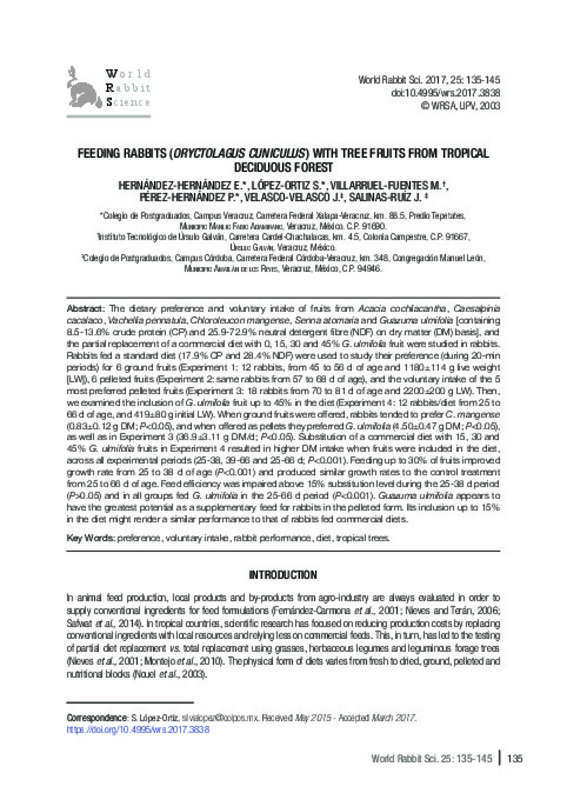JavaScript is disabled for your browser. Some features of this site may not work without it.
Buscar en RiuNet
Listar
Mi cuenta
Estadísticas
Ayuda RiuNet
Admin. UPV
Feeding rabbits (Oryctolagus cuniculus ) with tree fruits from tropical deciduous forest
Mostrar el registro completo del ítem
Hernández-Hernández, E.; López-Ortiz, S.; Villarruel-Fuentes, M.; Pérez-Hernández, P.; Velasco-Velasco, J.; Salinas-Ruíz, J. (2017). Feeding rabbits (Oryctolagus cuniculus ) with tree fruits from tropical deciduous forest. World Rabbit Science. 25(2):135-145. https://doi.org/10.4995/wrs.2017.3838
Por favor, use este identificador para citar o enlazar este ítem: http://hdl.handle.net/10251/84818
Ficheros en el ítem
Metadatos del ítem
| Título: | Feeding rabbits (Oryctolagus cuniculus ) with tree fruits from tropical deciduous forest | |
| Autor: | Hernández-Hernández, Eliceo López-Ortiz, Silvia Villarruel-Fuentes, Manuel Pérez-Hernández, Ponciano Velasco-Velasco, Joel Salinas-Ruíz, Josafhat | |
| Fecha difusión: |
|
|
| Resumen: |
[EN] The dietary preference and voluntary intake of fruits from Acacia cochliacantha, Caesalpinia cacalaco, Vachellia pennatula, Chloroleucon mangense, Senna atomaria and Guazuma ulmifolia [containing 8.5-13.6% crude protein ...[+]
|
|
| Palabras clave: |
|
|
| Derechos de uso: | Reserva de todos los derechos | |
| Fuente: |
|
|
| DOI: |
|
|
| Editorial: |
|
|
| Versión del editor: | https://doi.org/10.4995/wrs.2017.3838 | |
| Agradecimientos: |
We thank Consejo Nacional de Ciencia y Tecnología de México (CONACyT) for providing a grant to the first
author, the Línea de Investigación Prioritaria Agroecosistemas Sustentables for financing the investigation, and ...[+]
|
|
| Tipo: |
|








